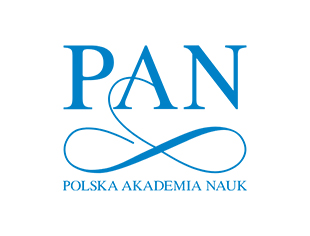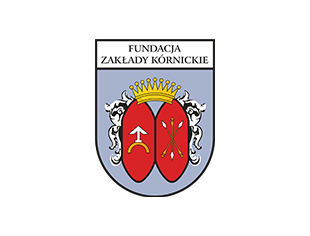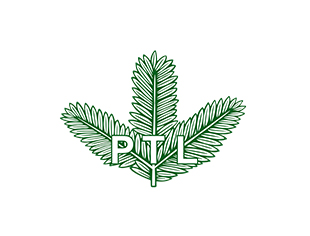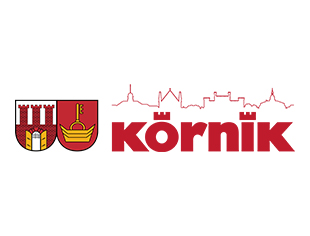COOPERATION










Institute of Dendrology
Polish Academy of Sciences
SCIENTIFIC CATEGORY A+ IN THE DISCIPLINE OF BIOLOGICAL SCIENCES
SCIENTIFIC CATEGORY A+ IN THE DISCIPLINE OF FOREST SCIENCES
COOPERATION







Aims and scope
Dendrobiology (formerly: Arboretum Kórnickie) is a semiannual open access journal that publishes peer-reviewed scientific articles related to the biology and ecology of trees and shrubs, to enhance our understanding of the functioning of woody plants in various ecosystems. Dendrobiology promotes research across the fields of anatomy, biochemistry, ecophysiology, ecology, molecular biology, morphology, physiology, reproduction, or systematics. Potentially suitable manuscripts should cover (but are not limited to) the following aspects:
Dendrobiology welcomes four types of papers:
Papers that exceed the word count will be returned to the Authors without review. Dendrobiology may consider accepting longer papers after contacting the Editors in advance and justifying the increase in article length in the Cover Letter.
Submission of manuscripts
The manuscript should be complete, concise, and clear, so before submission, the Authors are encouraged to read EASE Guidelines for Authors and Translators (freely available at www.ease.org.uk/publications/author-guidelines in >20 languages). Adherence will increase the chances of acceptance of submitted manuscripts.
Submission of the manuscript should be accompanied by a Cover Letter in which the Authors state the purpose, question, or hypothesis being addressed in the paper. If submitting a paper longer than 8,000 words, authors must explain why it is necessary to increase the word limit of the paper. Authors should also state in a Cover Letter that the work has not been previously published, is not being considered for publication elsewhere, and has been read and approved by all authors.
Online Submission
Please follow the hyperlink https://www.editorialsystem.com/dend on the left and upload all of your manuscript files following the instructions given on the screen. We ask for the submission of the manuscript as a single file together with tables, figures, etc., and also please upload the figures and tables in separate files.
Reviewers
Authors are asked to suggest five appropriate reviewers (with contact information). We strongly encourage Authors to diversify suggested reviewers across geographic origin, gender, and career stages, to provide multiple points of view in peer review. Usually, providing the most prominent researchers is ineffective, due to their overload of reviews. For that reason, it is crucial to provide a wide range of specialists, who can objectively and professionally suggest revisions for the manuscript.
Preparation of manuscript
Language
Only papers written in English will be accepted. We expect concise and simple language, as most of the readers of scientific literature are not native speakers. We strongly recommend following the recent guidelines of scientific writing, especially:
The transliteration of non-Latin characters should be based on the ISO 9:1995 transliteration standard.
Style
All parts of the manuscript must be typed in a 12-point font, with all margins at least 2.5 cm wide. Pages and lines within pages should be numbered.
Nomenclature, units, and abbreviations
All scientific terms should conform to the current international nomenclature. Botanical and zoological names should be typed in italics. Authorities of taxonomic and syntaxonomic names should be given after the first use. SI units should be used. All abbreviations, nomenclature, and symbols must be used consistently in the text and figures. Please use abbreviations only when abbreviations are used more than three times in the text.
Organization of the manuscript
Title page
The main body of the article
An original research articles should be organized in 4 sections labeled:
Discussion: the new results should be clearly distinguished from published data. In this section, results should be interpreted and not repeated. Particularly, a good Discussion section should answer three questions: how your findings differ from the contemporary state of the art?; why you obtained particular results?; what are the consequences of your results?
Acknowledgments
Acknowledgments of financial support and other forms of help received from people or institutions should be placed in a separate section, before the References section.
References
References in the text. References should be in the Harvard style, i.e. citations appear in the form (Nowak, 2011, 2012, 2014; Nowak & Werner, 1991; Nowak et al., 1998), or if only the year is given in brackets, there should be no comma after the author name, e.g., The results of recent work by Nowak et al. (1992)... References to papers having three or more authors should give the name of the first author only, followed by et al. Publications by three or more authors with the same first author should be listed chronologically. If there is more than one work by the same author or team of authors in the same year, a, b, c, etc. is added to the year both in the main body of the article and in the list of references.
Reference list. References should be listed alphabetically at the end of the article and should conform to the formats of the following examples. Journal titles should be given in full with volume numbers (the issue number in brackets is unnecessary). Uppercase first letters in article titles should be used only when appropriate.
Journal article:
Teskey RO, Saveyn A, Steppe K & McGuire MA (2008) Origin, fate and significance of CO2 in tree stems. New Phytologist 177: 17–32.
Sánchez-Cuesta R, Ruiz-Gómez FJ, Duque-Lazo J, González-Moreno P & Navarro-Cerrillo RM (2021) The environmental drivers influencing spatio-temporal dynamics of oak defoliation and mortality in dehesas of Southern Spain. Forest Ecology and Management 485: e118946. (for online-only articles with no page numbers)
Book:
Larcher W (1995) Physiological plant ecology. 3rd ed. Springer-Verlag, New York, Berlin, Heidelberg, Germany.
Proceedings and book chapter:
Rohfritsch O (1992) Patterns in gall development: Biology of insect-induced plant galls (ed. by JD Shorthouse & O Rohfritsch) Oxford University Press, New York, NY, USA, pp. 60–86.
Where a DOI is included in a reference, it should be cited as follows:
Zweifel R, Bangerter S, Rigling A & Sterck FJ (2012) Pine and mistletoes: how to live with a leak in the water flow and storage system? Journal of Experimental Botany 63: 2565–2578. doi:10.1093/jxb/err432.
Except for accepted manuscripts in press, unpublished material and personal communications should only be cited in the main body of the article and not in the references.
References should be checked carefully to make sure that all references given in the text (and no others) appear in the list of references and that the spelling of the author’s names and the dates are correct.
We highly recommend the use of a tool, e.g. EndNote or Zotero, for reference management and formatting with style used by Entomologia Experimentalis et Applicata.
EndNote reference styles can be searched for here: http://www.endnote.com/support/enstyles.asp
Zotero reference style can be searched for here:
Tables
Each table should be typed on a separate sheet furnished with self-explanatory, informative headings (Table 1. ...). Tables must be planned to fit the width of the published text of 170 mm (two columns) or 82.5 mm (one column).
Figures
These should be referred to in the text as Fig. 1, etc. Illustrations prepared in MS Excel and MS Word should be submitted in the original format.
Supplementary materials
Supplementary materials in the form of tables, figures, lists, databases, etc. can be attached to the work as independent files.
Voucher specimens and molecular data
Lists of studied specimens should be an integral part of the submission. We strongly recommend putting information for all specimens gathered (country, state/province, town, locality, co-ordinates, substrate, date of collection, collector, herbarium abbreviations, herbarium numbers, etc.) into a separate file and submit it as Supplementary Material. The suggested type of such data is the .csv file format, where georeferenced data (latitude, longitude) should be saved in decimal format (e.g. -37.798, 145.608). Also, precise localities of species records and georeferences of study plots and experiments should be included in the Methods section. Here authors are free to use the degrees, minutes, and seconds format (31°10’3.7’’ S, 125°32’41.9’’ E). If you would like to avoid giving exact localities, for example in the case of protected, rare, or endangered taxa, please let us know in the cover letter.
DNA sequences should be deposited in publicly-accessible databases like NCBI GenBank (https://www.ncbi.nlm.nih.gov/genbank/), EMBL (https://www.embl.org/) or others. We discourage citations of a single GenBank accession number sequence and recommend citations of the original sources, like papers in which sequences have been published for the first time. We also require submission of sequence alignments as supplementary materials or by citing them in the TreeBASE repository (https://treebase.org/treebase-web/home.html). Both sequences and alignments should be deposited, allowing the reviewers free access.
Ethics and peer review process
The corresponding author will be notified of receipt of the manuscript. We follow the COPE Code of Conduct concerning plagiarism, data manipulation, guest authorship, ghost authorship, and other cases of scientific misconduct. Any ethical problems or errors noticed before or after publication should be reported to the Editors (
Proofs
Page proofs will be sent to the corresponding author’s address as given on the title page. Alterations in the text, other than factual or printer errors, should then be avoided.
Open access statement
Dendrobiology is published as open access for academic work. All original articles and review papers published in this journal are free to access immediately from the date of publication. We don’t charge any fees for any reader to download articles and reviews for their own scholarly use. All articles will be published under the Creative CommonsAttribution-NonCommercial-NoDerivatives 4.0 International license  .
.
Preprint and post-print policy
Dendrobiology does not allow authors to deposit any form of preprint article in the Open-Access institutional archives, repositories, or personal websites. However, we strongly encourage authors to deposit a final publisher's version/PDF on an article (post-print) in repositories of all kinds. The primary benefit of post-print self-archiving is to reach a larger audience, which enhances the visibility and impact of your research.